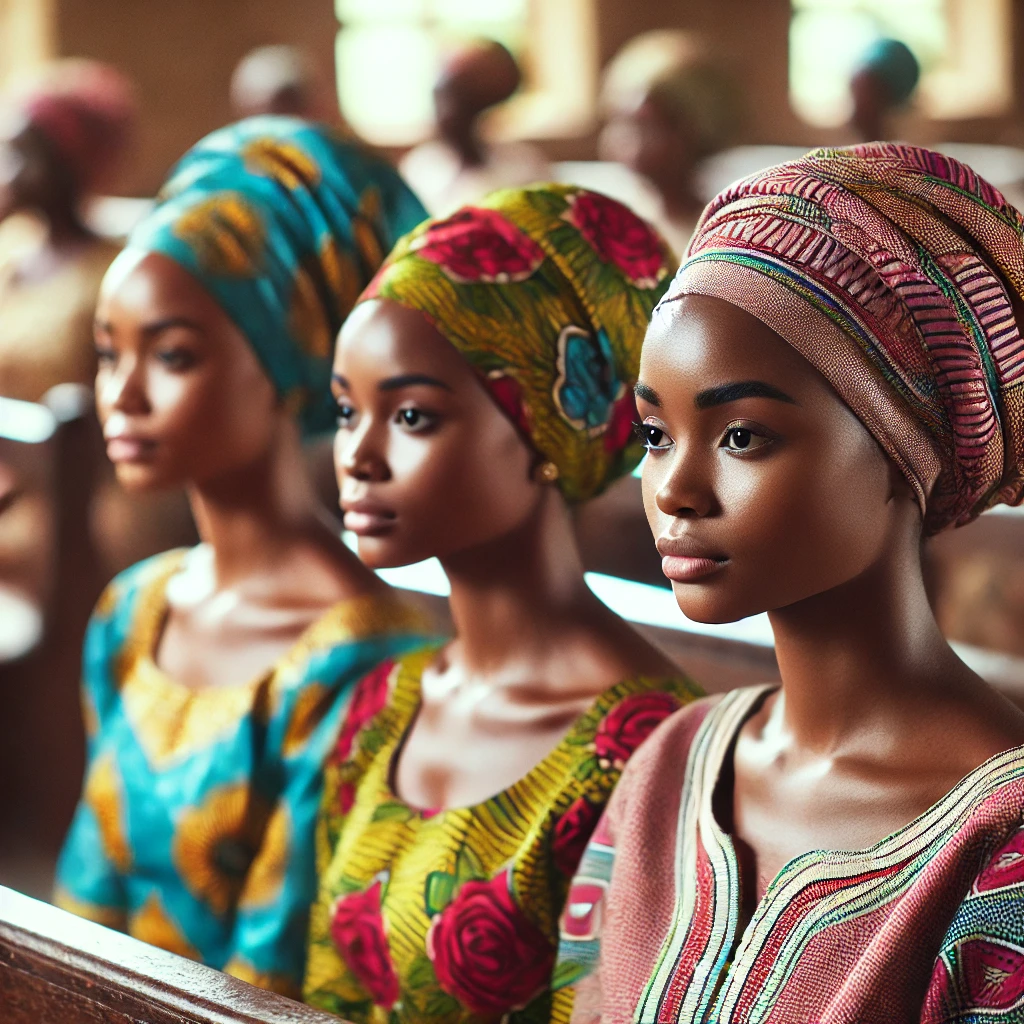In 1 Corinthians 11:1-16, Paul instructed the Christians in Corinth to view hair covering for women as both a symbol of submission and reverence to God. However, many questions have arisen regarding the meaning and application of these passages. To address these questions, we will follow the biblical principle found in Isaiah 28:10: “For precept must be upon precept; line upon line; here a little, and there a little,” allowing Scripture to interpret itself.
Is the hair covering for women a veil or the hair on her head?
To understand this better, let’s first explore the original Greek words used for “cover” and “head” in 1 Corinthians 11, using a concordance to clarify their meanings and context.
In 1 Corinthians 11:5 (KJV), Paul says, “But every woman that prayeth or prophesieth with her head uncovered dishonoureth her head: for that is even all one as if she were shaven.” The Greek word translated as “uncovered” here is ἀκατακάλυπτος (akatakalyptos), which literally means “unveiled” or “uncovered.” This word clearly refers to a veil or physical covering over the head. To strengthen this understanding, we can look at its root: καλύπτω (kalypto), which means “to cover, to veil, or to hide.” The usage strongly points to an external covering, such as a veil, rather than hair.
The word for “head” in this verse is κεφαλή (kephalē), which refers to the physical head, not just the scalp or face. To further clarify, in verse 6, Paul says, “For if the woman be not covered, let her also be shorn.” If hair were the covering Paul referred to, this statement would make no sense. Why would Paul say that if a woman is not covered (by her hair), she should cut her hair off?
To illustrate, imagine a bald mannequin and a wig. If we consider the wig to be the covering, then Paul would be saying that if the mannequin (representing the woman) refuses to wear the wig (symbolizing her hair), she might as well be completely bald. If she’s not covered by her hair she’s already shorn and cannot be likened to one who is been shorn.
If a woman refuses to wear the external covering (veil), she might as well cut off her hair entirely because both actions (praying unveiled or being shorn) are viewed as dishonorable. This shows that Paul sees the veil as distinct from the hair.
Verse 15: says “Her hair is given her for a covering” and this is the basis of the suggestion that it could be sufficient to cover her hair in church. The context here is about the woman’s glory, not her role in worship. Paul is stating that God gave a woman long hair as a natural adornment, but this does not replace the veil or external covering described earlier in the passage.
Was the instruction on hair covering just for the Corinthians?
In 1 Corinthians 11, Paul’s discussion on head coverings and authority is often viewed as a cultural debate, something that applied only to the Corinthians and cultures with similar values as the Corinthians might have had. However, In verse 2, Paul praises the Corinthians,for keeping “the ordinances”, as he delivered them (1 Corinthians 11:2, KJV). The term “ordinances” here is derived from the Greek word παραδόσεις (paradosis), meaning “that which is handed down.” This word is often used in the New Testament to refer to divine teachings or apostolic traditions, as seen in 2 Thessalonians 2:15: “Hold the traditions (paradosis) which ye have been taught, whether by word or our epistle.” These are not mere cultural customs but are divinely inspired teachings designed to guide the universal church.
Paul’s message becomes even clearer in verse 16, where he addresses potential disputes about these teachings: “But if any man seem to be contentious, we have no such custom, neither the churches of God” (1 Corinthians 11:16, KJV). In reading this it’s unwise to suggest that it applies to just the corinth as Paul warned that it is neither the teachings of the churches of God. Paul is not offering a cultural opinion but asserting a uniform practice for all believers.
Moreover, the arguments and appeals Paul presents in this passage apply universally to all Christians, transcending culture and time. First, Paul establishes a theological foundation by emphasizing that “the head of every man is Christ; and the head of the woman is the man” (1 Corinthians 11:3). Second, he appeals to the natural order in verse 14, asking, “Doth not even nature itself teach you…?” Finally, in verse 10, he appeals to the presence of angels, stating that a woman ought to cover her head “because of the angels.” These appeals—to divine hierarchy, natural order, and heavenly beings—demonstrate that Paul’s instructions are not bound by culture but are deeply rooted in theology itself.
Why is hair covering not practiced by the westerners of the same denomination but upheld in African congregations?
Closely tied to the previous question, I know many have claimed that hair covering is practiced by Africans primarily because of our culture rather than our religion. But history says otherwise. Historically, the practice of women covering their heads during worship was prevalent among American Christians across various denominations. This tradition was rooted in the biblical teachings we’ve studied in 1 Corinthians 11, and was seen as a sign of modesty and reverence. Women commonly wore hats, veils, or scarves during church services as an outward expression of their faith and humility before God.
In the early 20th century, this practice began to wane, influenced by cultural shifts and changing societal norms. The rise of secularism and feminist movements contributed to a decline in the observance of head coverings in worship settings. Despite this, certain groups, such as the Anabaptists and some Holiness Christians, have continued the tradition. It is similar to the movements in Africa. For centuries even after westernization and the introduction to the gospel by western missionaries we have practiced hair covering and often it’s been a symbol of even modesty and submission in addition to reverence but as the same waves of secularism and feminism trickles in we have as well gradually began to discard it.

Ellen White wrote
“Sunday afternoon we rode five miles to Villar Pellice, where Bro. Bourdeau has been holding meetings a few weeks… The congregation was composed of intelligent-looking people, and the peasant women looked neat and modest in their white bonnets with heavily fluted fronts… {RH, June 1, 1886 par. 18}
I was shown that some of the people of God imitate the fashions of the world, and are fast losing their peculiar, holy character, which should distinguish them as God’s people. I was pointed back to God’s ancient people, and then was led to compare their apparel with the mode of dress in these last days. What a difference! What a change! Then the women were not so bold as now. When they went in public they covered their face with a vail. In these last days fashions are shameful and immodest…. The small bonnets, exposing the face and head, show a lack of modesty. The hoops are a shame. The inhabitants of earth are growing more and more corrupt, and the line of distinction must be more plain between them and the Israel of God, or the curse which falls upon worldlings will fall upon God’s professed people. {2SG 227.1}
I was directed to the following scriptures. Said the angel, They are to instruct God’s people. 1 Timothy 2:9, 10. “In like manner also, that women adorn themselves in modest apparel, with shamefacedness and sobriety; not with broidered hair, or gold, or pearls, or costly array; but (which becometh women professing godliness) with good works.” 1 Peter 3:3-5. “Whose adorning, let it not be that outward adorning of plaiting the hair, and of wearing of gold, or of putting on of apparel; but let it be the hidden man of the heart, in that which is not corruptible, even the ornament of a meek and quiet spirit, which is in the sight of God of great price. For after this manner in the old time, the holy women also who trusted in God, adorned themselves.” {2SG 228.1}
Hence, we see that hair covering was already a symbol of reverence in worship and modesty and modesty even in the American culture in the 17th century. The feminist revolution that began in this time challenged these articles of modesty.
I hope this breakdown has helped you to see the consistency in scripture and even in history. Hair covering is not a cultural mandate but a general principle of reverence that we can all imbibe not to tick our ways into God’s heart but in appreciation of the symbols of which it is given.
God bless you as you walk humbly in the light revealed.






